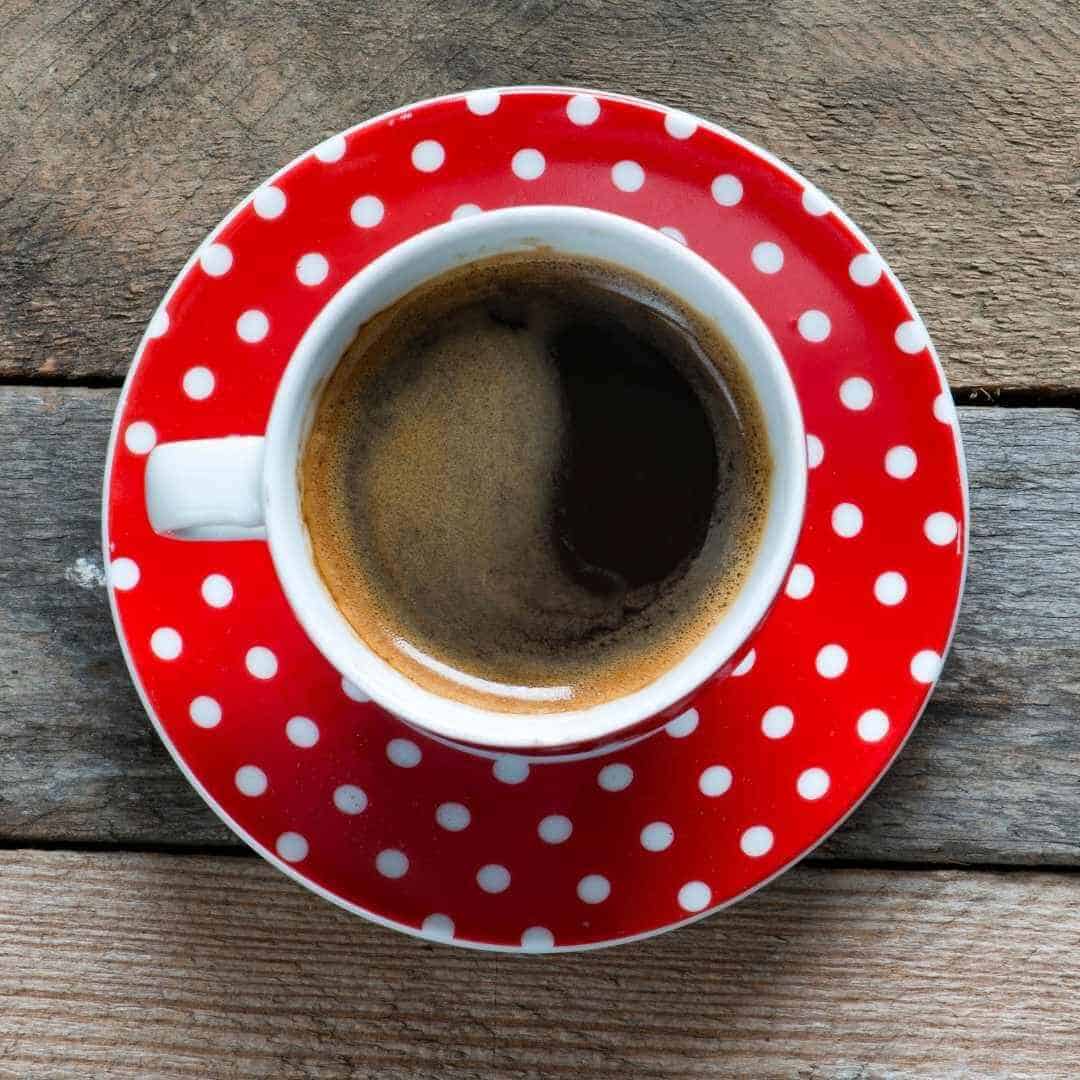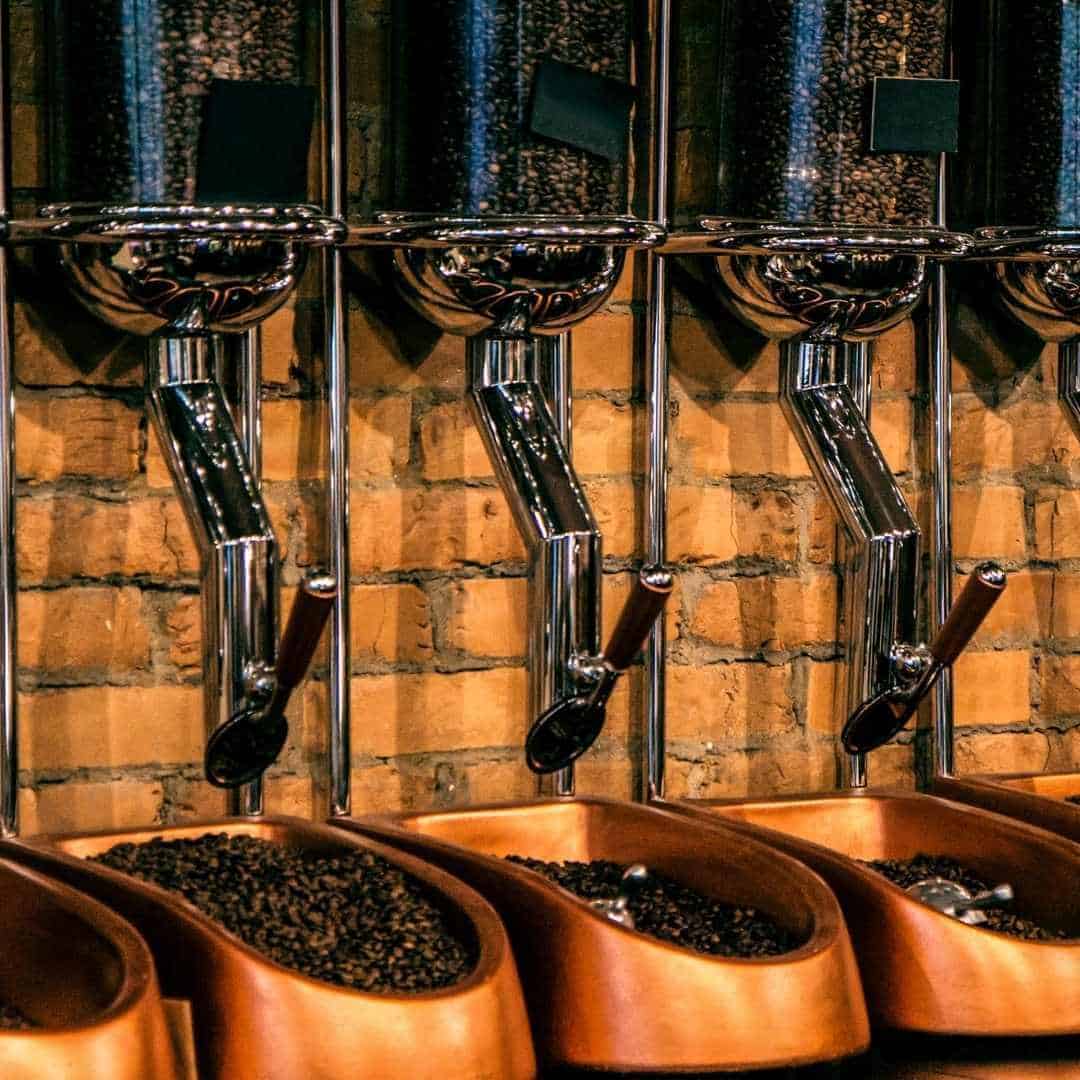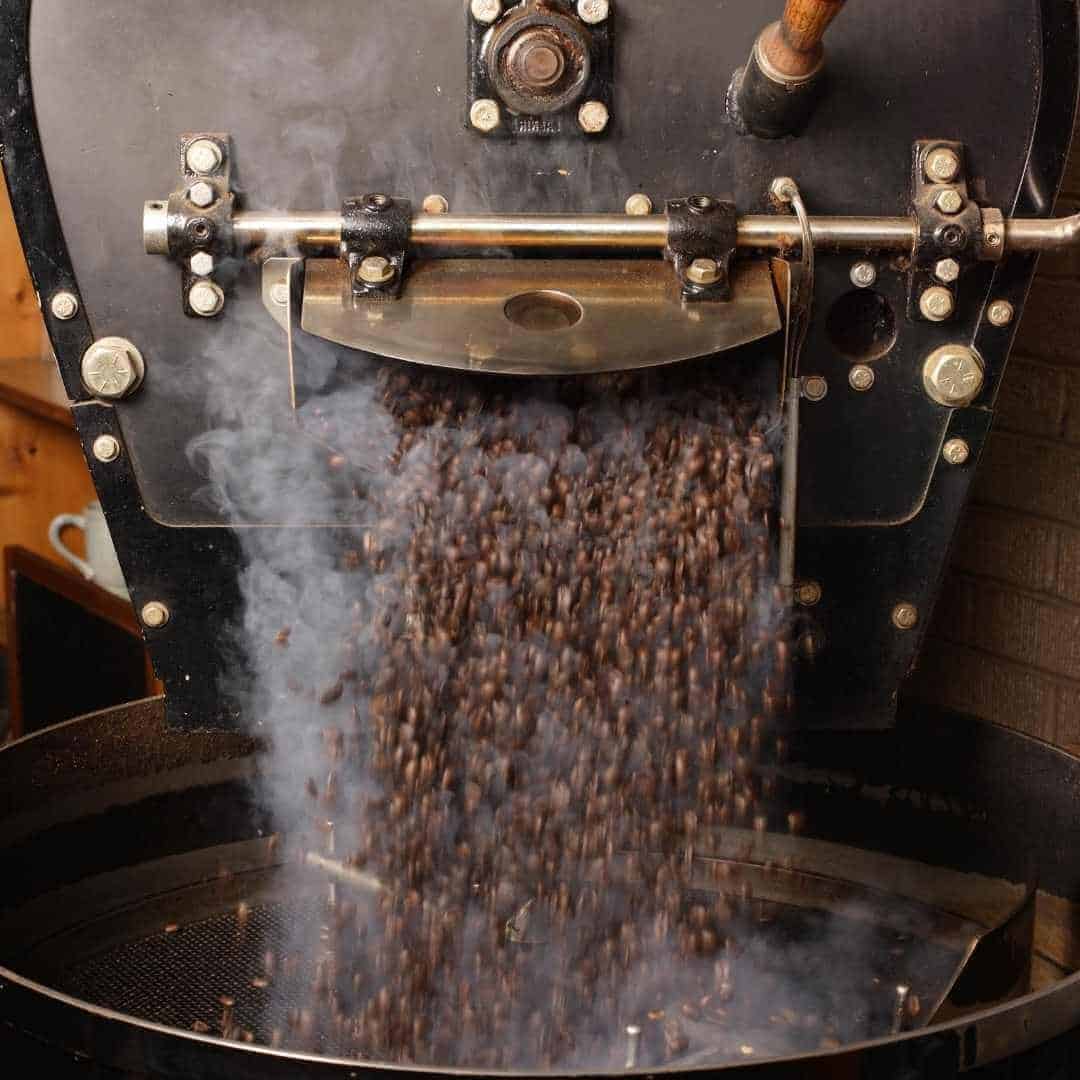I can’t start my day without first sipping on a strong cup of coffee. In fact, I’m pretty sure that I’m not even human until I get that first satiating sip of black gold. I’ve personally always preferred my coffee to be robust and strong.
However, there are actually many different factors at play that contribute to whether a cup of coffee is strong or weak. For the uninformed, getting to the bottom of this issue might even seem a bit daunting.
Fear not my fellow caffeine fiends. Let me be your guide.

Together we’ll discover whether high caffeine content alone makes for some strong coffee. Does stronger-tasting coffee mean that it really packs more of a punch? What are some of the best methods to brew that bean juice for the boldest results? Does it matter what beans you choose?
Hopefully, we can answer all of these questions and then some. When dealing with something as crucial to daily life as a cup of Joe – and yes, this is a very serious business – It’s vital that we get our facts straight.
What Exactly Makes Strong Coffee?
To answer this question accurately and efficiently, it’s important to clarify what we mean by ‘strong.’ When I think of strong, my mind immediately goes to caffeine content, but others may be thinking about the strength of the roast.
These two variables aren’t necessarily mutually exclusive; neither do you need one to have the other. Some coffee tastes very robust and dark but has less of a caffeine kick than lighter roasts and vice versa.
Different species or varieties of coffee bean-producing plants – for which there are more than 100 – have a vastly different flavor profile and caffeine content.
The third major contributing factor to the strength of the coffee is how it is brewed. There are dozens of ways to make a cup of coffee, and each one comes with strikingly different results.
Coffee Species With Most Caffeine

Robusta has the highest caffeine concentration of 180 mg per average 8 oz (250 ml) brewed cup of coffee. Followed by arabica, which gives you about 95 mg of caffeine per average cup. Liberica had the lowest caffeine concentration at 75 mg per average-size cup.
Although there are over 100 species of coffee cultivated around the globe, there are two primary types of beans that you will find on the grocery store shelf and two other types that are bit a rarer to find.
Let’s take a look at these common types and how they stack up to each other and what sets them apart.
Arabica (75-150 mg caffeine per cup)
If you take a little stroll down the coffee aisle at your local grocery store, this is the type that you will see the most of. Arabica beans are the most popularly cultivated coffee beans by far, making up about 60 to 70% of global coffee production.
Arabica coffee is typified by its milder, delicate, and slightly sweeter flavor palette comparatively Robusta beans, which we’ll touch on in a minute. It also tends to be much less acidic than other varieties. Some connoisseurs point out hints of chocolate, caramel, nuts, and even a slight berry-like fruitiness to its flavor profile.
Even though this species was first cultivated in the southwestern highlands of Ethiopia, where indigenous people would crush its beans and mix them with fat to be consumed for its stimulating properties, it was the Arabic world that first imported the beans to be brewed into a hot beverage.
Robusta (140-210 mg caffeine per cup)
The second most commonly produced bean variety is Robusta. Many will try and argue that Arabica coffee is the tastier contender by comparison. However, that assumption isn’t always something to bank on.
In the past, Robusta beans were used commonly for manufacturing instant coffee or as a filler coffee for dark roast blends. This is because Robusta has a higher caffeine content compared to Arabica beans. It also tends to be a bit more on the bitter side.
Many Robusta coffees on the market are of inferior quality to Arabica alternatives. This has led to Robusta developing a less-than-stellar reputation. One that I personally feel is unwarranted as there are many high-quality Robusta coffees on the market that are crafted with quality and flavor in mind.
I already expressed how big of a fan I am of coffee which both packs a caffeinated punch but also comes with a stronger flavor.
If robust coffee is what you seek, then Robusta beans are perfect for you.
In my relentless pursuit of finding the coffee with the most caffeine, I recently came across Biohazard Coffee – the world’s strongest coffee.
It doesn’t mess around, clocking in at 928 mg of natural caffeine per 12-ounce cup.
Not only is this stuff three times as strong as any energy drink on the market, but it also has a pleasantly smooth, mellow flavor. I highly recommend this stuff if you are looking for a truly strong cup of coffee.
Liberica and Excelsa (55-130 mg caffeine per cup)
Liberica is a species of coffee plant that is much rarer to find, typically being reserved for specialty shops. You certainly won’t find it on the shelves of a big-box grocery store chain.
Its flavor profile has been described as being somewhat woody, earthy, and floral. It’s definitely not a contender for the strongest coffee out there but still is a tasty treat.
Excelsa is technically a variety of Liberica, but it has very distinctive features that make it uniquely sought after by enthusiasts.
Its flavor is somewhat tart and fruity. It’s primarily grown in Southeast Asia, and because it only grows in a very specific climate, it makes up an extremely small share of the coffee market.
Does Dark Roast Have More Caffeine?

It’s a common misconception that the darker roast levels of coffee equate to a more caffeinated beverage. In reality, caffeine is somewhat burned out of the coffee bean as it is roasted, but that is not much as caffeine is quite stable at high temperatures. Caffeine content stays relatively unchanged throughout each stage of the roasting process.
However, some commentators have pointed out that you also lose some bean density when you roast coffee beans. So even though a lighter roast contains more caffeine by weight, an equal-sized scoop of light or a dark roast will have very similar caffeine levels – with lighter roasts still coming out slightly on top if you’re looking for the stronger cup of java.
This is precisely why I asked you what your definition of ‘strong’ was when it comes to coffee. I love a nice dark roast or a French roast when I’m craving that smokey, bitter flavor that they are known for.
However, with that stronger flavor, I end up losing quite a bit of the coffee’s subtlety in flavor and a great deal of caffeine content.
Light Roasts. There is nothing light about its caffeine content, but the flavor itself does tend to be on the mellower side. Light roasts are perfect for coffee connoisseurs who really want to taste the rich flavor profile of the beans themselves.
Medium Roasts find a nice balance between aroma, flavor, acidity, and color. They still retain the bean’s natural flavor but couple that with the slight smokiness of the roasting process. Roasting has a way of pulling added flavor out of the bean, but once you’ve roasted too much, that flavor tends to be mostly lost.
Dark Roasts retain little to none of the characteristic flavors of the bean. Instead, they swap that out for a bitter, somewhat burnt flavor. We’re not going to mention any names, but a certain coffee shop chain with a nautically themed mascot helped popularize dark roasts because they are easier to mass-produce with a consistent flavor profile.
Read Also: Roasting in an Air Fryer – Here Is How To Do It…
Best Brewing Method For Strong Coffee

Sure, there is always a standard drip-brew coffee maker, but there are actually several other ways to brew a strong cup of coffee. Some methods are notable for producing stronger results than others.
Let’s take a look at some of the most common brewing methods and see how they compare with each other.
Drip Coffee
Your typical drip coffee maker is one of the most common means of making a cup of coffee because of its convenience and ease of use. Simply add water, scoop in some grounds, and flip the power switch, and before you know it, you have a pot of coffee.
There is little finesse to this method, but it does produce a solid cup of Joe.
Drip coffee makers tend to produce a milder beverage that might even be deemed ‘watered down’ by those who take their coffee very seriously – like me. If you’re looking for a strong cup of coffee, I recommend looking elsewhere.
Pour Over
Although technically speaking, drip coffee is a variety of pour-over, using a dedicated coffee-cone pour-over set-up allows for much more control of how the grounds are saturated. I always use a goose-neck kettle so I can pour the water on the fresh grounds at a slower pace to ensure that I’m getting the most out of each scoop.
A coffee machine just douses all of your grinds all at once and quickly sends that water through indiscriminately. They also are designed for making multiple cups at a time. On the other hand, the pour-over method gives you more control of the temperature, flavor, and strength of each cup of coffee.
French Press
If you are a fan of a strong, rich, and full-bodied cup, then this is my most recommended brewing method. French presses also give you a lot of control over the variables that go into your coffee. They are perfect for people who like to make smaller quantities of coffee at a time to achieve an ideal flavor or potency.
The French press differs from pour-over by the fact that it first steeps the grounds for several minutes before they are pressed through the hot water. You also have the choice of how many grounds to use for each cup. If you want super wake-up juice, you can add a couple of extra scoops to your press to produce that potent effect.
How To Make Strong Coffee In a French Press?

In case you’re still confused as to how to make a strong cup of coffee, you can always follow these simple instructions:
- Carefully measure out 2 tablespoons of Biohazard Coffee into your brewing apparatus of choice – I’m using a french press, but you can use whatever you prefer.
- Heat 6 ounces of water and bring to a boil.
- Pour hot water (not quite boiling) into the pot, to your French press, and allow to steep for 5 to 10 minutes. Alternatively, add your coffee grinds to your pour-over cone and then slowly pour 6 ounces of water through your grinds.
- If using a French press, you can now slowly push down the plunger. If it gives you resistance, you can wait a couple more minutes.
- If you are using a pour-over method, then your strong coffee is now ready to enjoy.
Read Also: Mushroom Coffee – Why This Combo Has Earned Itself Quite The Reputation?
Fun Facts And Pro Tips For Finding The Perfect Cup Of Joe
- Old coffee grounds or beans might lose their aroma and flavor over time, but they won’t lose their caffeine. This is because the caffeine molecule is actually quite stable.
- Coffee is more caffeinated by volume than most energy drinks. For example, an 8-ounce Red Bull contains 80 mg of caffeine. Your average cup of coffee is around 100 to 200 mg. Biohazard Coffee packs a whopping 928 mg per 12-ounce serving.
- Mayo Clinic recommends that an adult not exceed 400 mg of caffeine per day.
- Adding sugar and cream only reduces the amount of volume in your cup, not the level of caffeine in your coffee.
- Espresso is actually just a type of grind, not a specific variety of coffee. Espresso is more finely ground, allowing for more water to pass through a greater surface area when it is used with an espresso machine. These machines use pressure to shoot hot water through a packed puck of coffee grounds. Espresso captures more of the flavor of the beans and concentrates the coffee into a smaller serving – which is typically around 1 ounce.
Read Also: Natural Alternative To Coffee That Tastes Like a Real Thing. Roasted Grain Drink And Its Benefits
Final Words
Whatever your preferred means of brewing coffee might be, there are many things to consider if you are intent on making some seriously strong coffee. The intensity of its flavor alone doesn’t always equate to a more potent potable beverage.
If your goal is to get the most caffeine for your buck, it’s worth taking the time to choose the variety and roast that best suits your desires. Just do me one favor if you can. Always respect the coffee. There is nothing worse than a weak cup of Joe.
Read Also: Did You Drink a Bit Too Much Caffeine? Here Are 7 Herbs That Make You Sleep Fast And Sound

